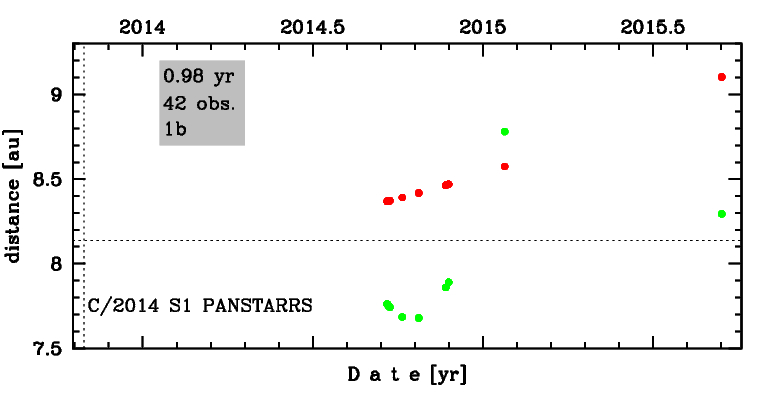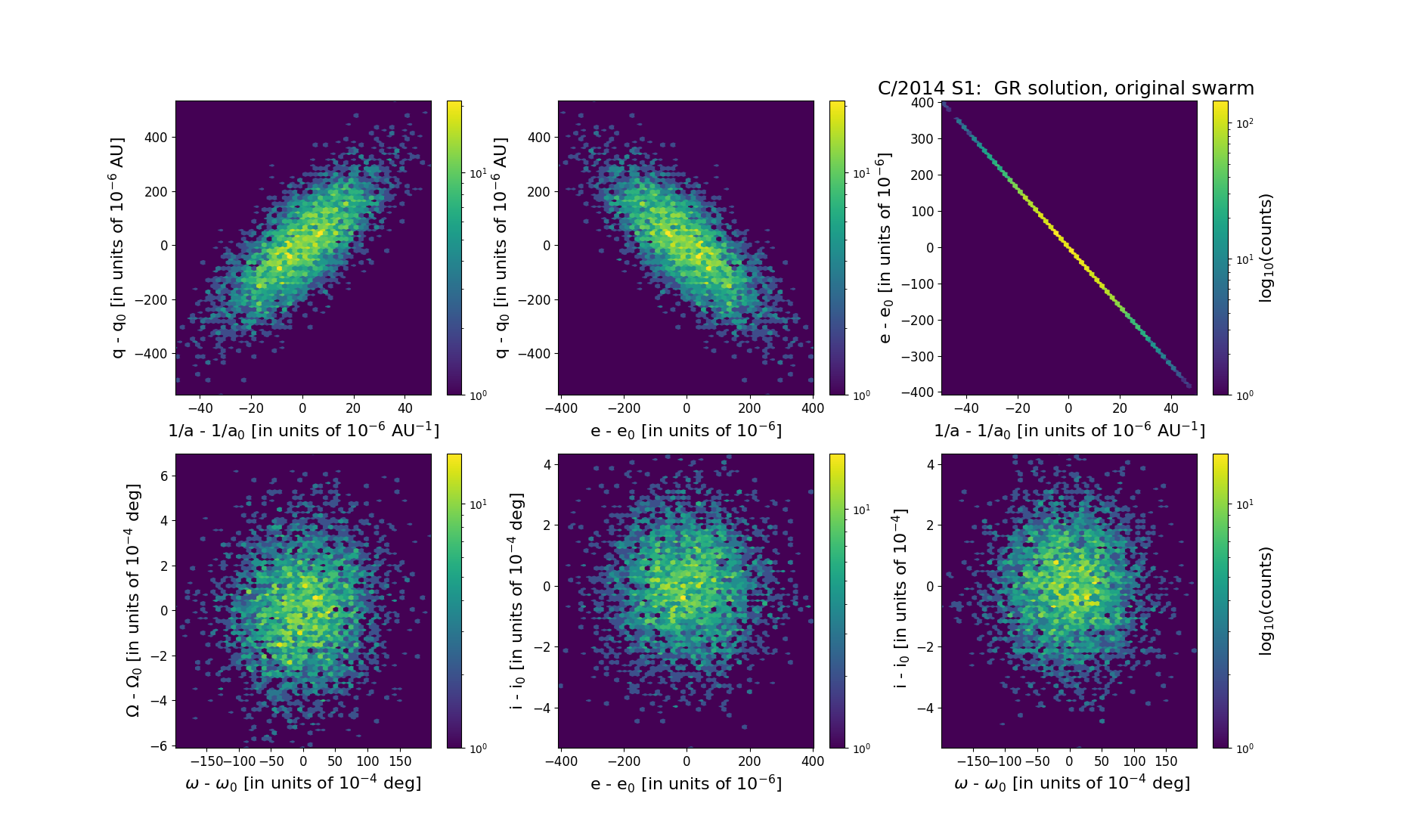C/2014 S1 PANSTARRS
more info
Comet C/2014 S1 was discovered on 19 September 2014 with Pan-STARRS 1 telescope (Haleakala), that is about 11 months after its perihelion passage. This comet was rarely observed until 3 September 2015.
Comet had its closest approach to the Earth on 13 November 2013 (7.561 au), about two weeks after its perihelion passage.
Solution given here is based on data spanning over 0.98 yr in a range of heliocentric distances: 8.37 au – 8.137 au (perihelion) – 9.10 au.
This Oort spike comet suffers extremely slight planetary perturbations during its passage through the planetary system and its semimajor axis will be almost unchanged after leaving the planetary zone (see future barycentric orbits).
Comet had its closest approach to the Earth on 13 November 2013 (7.561 au), about two weeks after its perihelion passage.
Solution given here is based on data spanning over 0.98 yr in a range of heliocentric distances: 8.37 au – 8.137 au (perihelion) – 9.10 au.
This Oort spike comet suffers extremely slight planetary perturbations during its passage through the planetary system and its semimajor axis will be almost unchanged after leaving the planetary zone (see future barycentric orbits).
| solution description | ||
|---|---|---|
| number of observations | 42 | |
| data interval | 2014 09 19 – 2015 09 03 | |
| data type | observed only after perihelion (POST) | |
| data arc selection | entire data set (STD) | |
| range of heliocentric distances | 8.37 au – 9.1au | |
| detectability of NG effects in the comet's motion | NG effects not determinable | |
| type of model of motion | GR - gravitational orbit | |
| data weighting | YES | |
| number of residuals | 84 | |
| RMS [arcseconds] | 0.47 | |
| orbit quality class | 1b | |
| orbital elements (barycentric ecliptic J2000) | ||
|---|---|---|
| Epoch | 1703 05 14 | |
| perihelion date | 2013 10 28.77452736 | ± 0.08215051 |
| perihelion distance [au] | 8.13780499 | ± 0.00014432 |
| eccentricity | 1.00004457 | ± 0.00012341 |
| argument of perihelion [°] | 288.735848 | ± 0.005663 |
| ascending node [°] | 352.668477 | ± 0.000199 |
| inclination [°] | 123.771357 | ± 0.00014 |
| reciprocal semi-major axis [10-6 au-1] | -5.48 | ± 15.16 |
| file containing 5001 VCs swarm |
|---|
| 2014s1a1.bmi |

